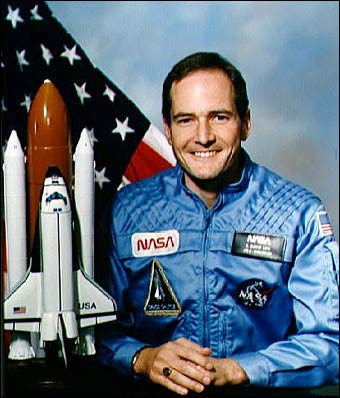George Low (George David Low)

Selected by NASA in May 1984 as an astronaut candidate, George Low became an astronaut in June 1985. He held a variety of technical assignments including work on the Remote Manipulator System (RMS), on Extra-vehicular activity (EVA), and Orbiter test and checkout tasks at the Kennedy Space Center. Low served as a spacecraft communicator (CAPCOM) in the Mission Control Center during STS Missions 26, 27, 29 and 30. He also served as the lead astronaut in the Man-Systems Group and Station Operations Group of the Space Station Support Office. In 1993, Low was a member of the Russian Integration Team which worked for several months in Crystal City, Virginia to define the changes from the old Space Station Freedom to the new International Space Station. In 1994, he served as the Manager of the EVA Integration and Operations Office, and in 1995 he served as an assistant in the NASA Legislative Affairs Office where he worked with Members of the United States Congress and their staffs to keep them informed about NASA’s aeronautics and space programs. A veteran of three space flights, Low logged over 714 hours in space, including nearly six hours on a spacewalk. He was a mission specialist on STS-32 (January 9–20, 1990) and STS-43 (August 2–11, 1991), and was the payload commander on STS-57 (June 21 to July 1, 1993). George Low left NASA in February 1996 to pursue an aerospace career with Orbital Sciences Corporation’s Launch Systems Group in Dulles, VA. On his first mission, George Low was a crew member on STS-32 which launched from the Kennedy Space Center, Florida, on January 9, 1990. On board the Orbiter Columbia the crew successfully deployed the Syncom IV-F5 communications satellite, and retrieved the 21,400-pound Long Duration Exposure Facility (LDEF) using the RMS. They also operated a variety of middeck materials and life sciences experiments, as well as the IMAX camera. Following 173 orbits of the Earth in 261 hours, Columbia returned to a night landing at Edwards Air Force Base, California, on January 20, 1990.
George Low next served as the flight engineer aboard the Orbiter Atlantis on STS-43. The nine-day mission launched from the Kennedy Space Center, Florida, on August 2, 1991. During the flight, crew members deployed the fifth Tracking and Data Relay Satellite (TDRS-E), in addition to conducting 32 physical, material, and life science experiments, mostly relating to the Extended Duration Orbiter and Space Station Freedom. After 142 orbits of the Earth in 213 hours, the mission concluded with a landing on Runway 15 at the Kennedy Space Center on August 11, 1991. On STS-57, George Low served as payload commander aboard the Orbiter Endeavour, which launched from the Kennedy Space Center, Florida, on June 21, 1993. The primary objective of this flight was the retrieval of the European Retrievable Carrier satellite (EURECA) using the RMS. Additionally, this mission featured the first flight of Spacehab, a commercially-provided middeck augmentation module for the conduct of microgravity experiments. Spacehab carried 22 individual flight experiments in materials and life sciences research. During the mission Low, along with crew mate Peter J.K. Wisoff, conducted a 5-hour, 50-minute spacewalk during which the EURECA communications antennas were manually positioned for latching, and various extravehicular activity (EVA) tools and techniques were evaluated for use on future missions. Endeavour landed at the Kennedy Space Center on July 1, 1993, after 155 orbits of the Earth in 239 hours.
Born
- February, 19, 1956
- USA
- Cleveland, Ohio
Died
- March, 15, 2008
- USA
- Reston, Virginia
Cause of Death
- colon cancer



